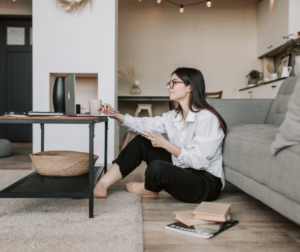
More than two years ago, the working world began working from home seemingly overnight. In the rush to accommodate this new work structure, employees throughout the world created makeshift home offices, repurposing guest rooms and storage spaces, kitchen tables and bedrooms to create a work-from-home zone. In many cases, there was little opportunity at the time to optimize these spaces with thoughtful touches and ergonomic considerations.
Although many are still working at home, the ergonomic element, or lack thereof, has changed little. As a result, remote workers are experiencing a range of musculoskeletal injuries such as carpal tunnel, pinched nerves, TMJ, tension headaches and disruptions in sleep.
Perils of Too Much Sitting
An increase in pain felt in the neck, head and/or back are often the cumulation of dysfunction in the body created by too many hours spent in front of the computer. It’s estimated that most workers spend around 10 hours a day in front of their work screen(s). Problems also arise when individuals neglect hydration, nutrition, and sleep, allowing stress levels to rise. This is because the body is meant to move and is rarely happy with sitting for long periods of time.
To counteract this, it’s important to take frequent small breaks to walk or move around your workplace or home throughout the day. This includes incorporating stretches for the neck, wrists and arms and performing strengthening exercises such as lunges and squats. Also, do not neglect the importance of proper nutrition, hydration, and quality sleep. If pain lasts for more than a week or if it begins to limit activity, it may be time to seek help. Untreated acute pain can become chronic pain if left untreated.
Tips for a More Ergonomic Workspace
- Place monitor(s) at eye level to improve posture and reduce tilting the head forward/backward
- Use a chair with supportive armrests
- Assess computer screen positioning
- Sit in a chair that positions the hips higher than the knees
- Position the screen an arm’s length away
- Use the keyboard in a way to keep elbows at a 90° angle
Maintain a straight back posture with shoulders back, feet flat and knees at a 90° angle


